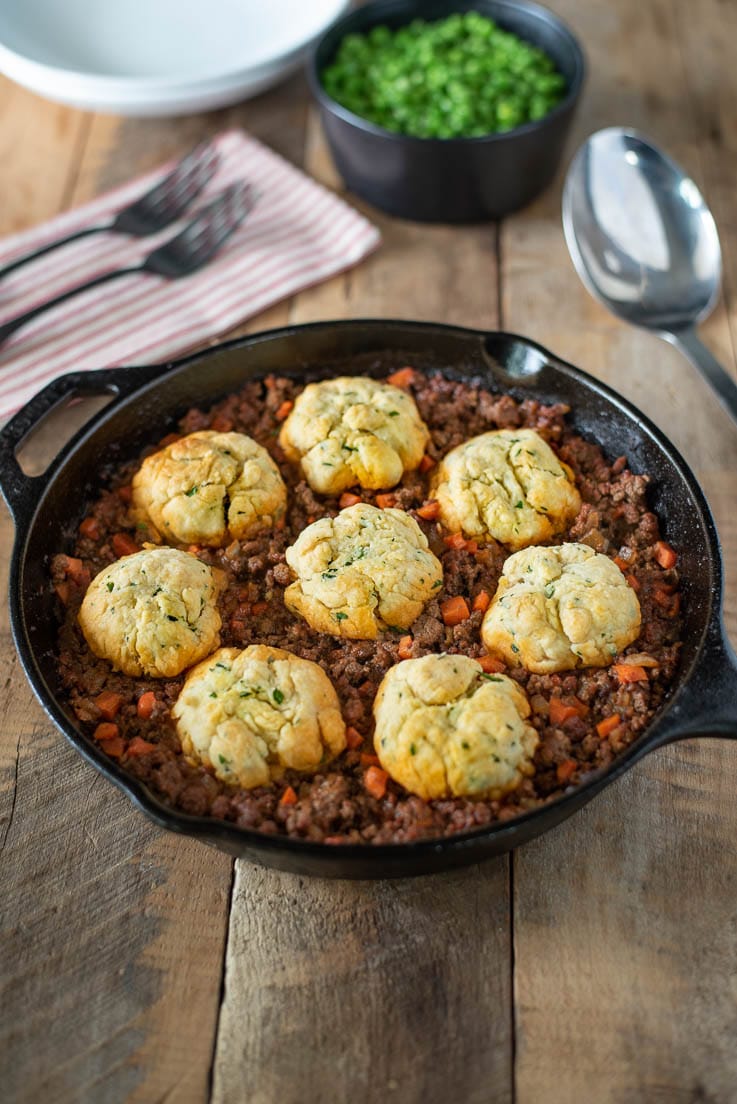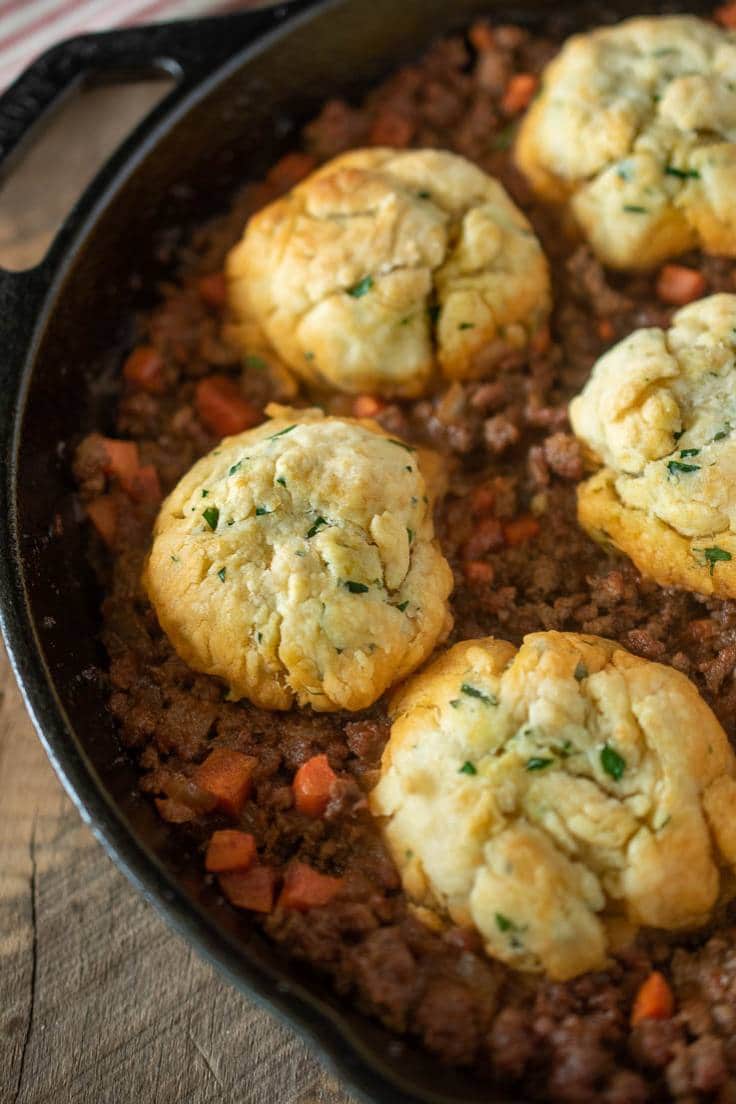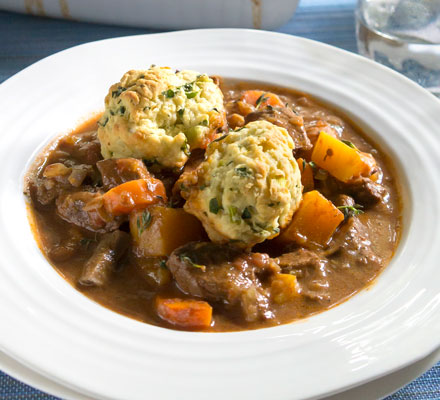Minced Beef and Dumplings
A truly delight of the British gastronomy
This classic British dish is a simple, great tasting comfort food. The ground beef mixture is topped with soft herb dumplings. This is similar to a beef and biscuits recipe, but it's made on the stove top.
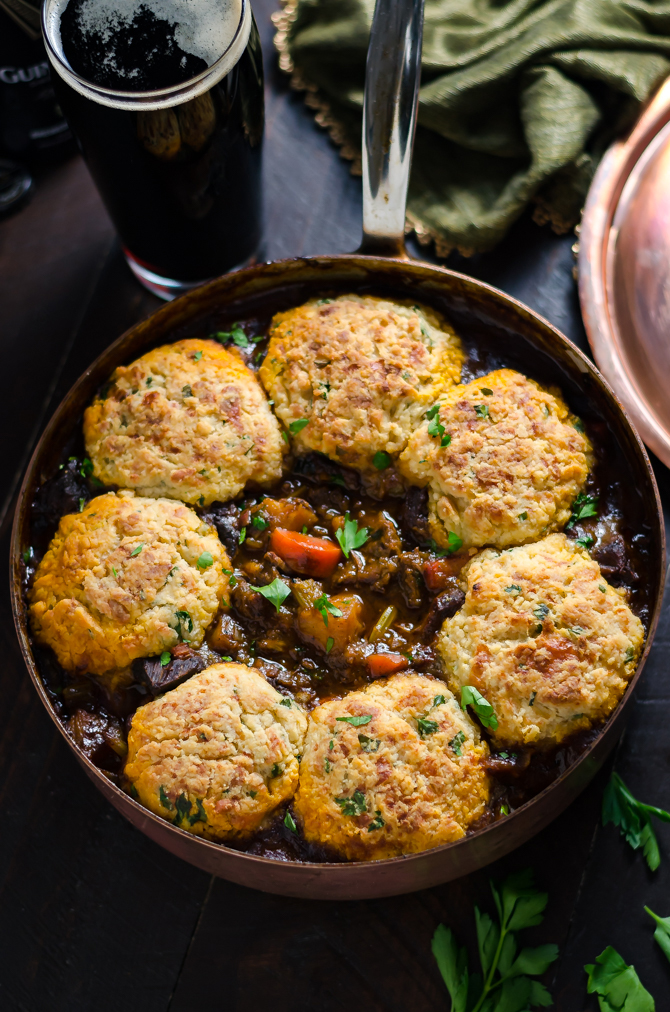
Homemade Minced Beef and Dumplings are the best British comfort food. A hearty meal served hot and bubbly to warm you from the inside out - and - it’s all made in one pan!.
Mince and Dumplings (also known as mince cobbler) is a traditional North East of England, a real stick-to-your-ribs meal. The mince (as called in the UK) or minced beef part of this dish is similar to the traditional shepherd’s pie, but beef is used instead of lamb, and red wine instead of Guinness.
The dish is started on the stovetop to brown the meat then transferred to the oven to cook the carrots and brown the dumplings that are crispy on the outside and soft inside.
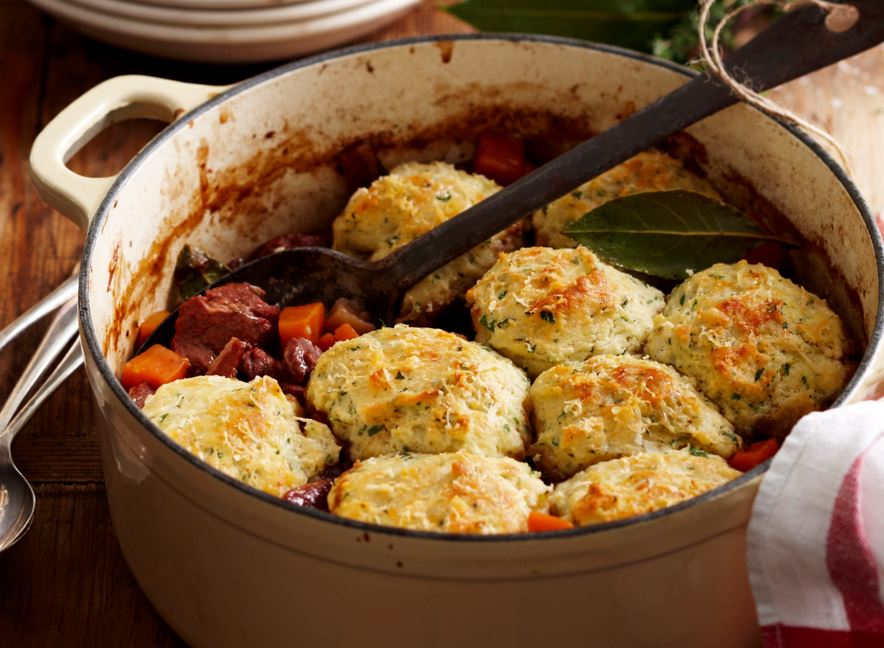
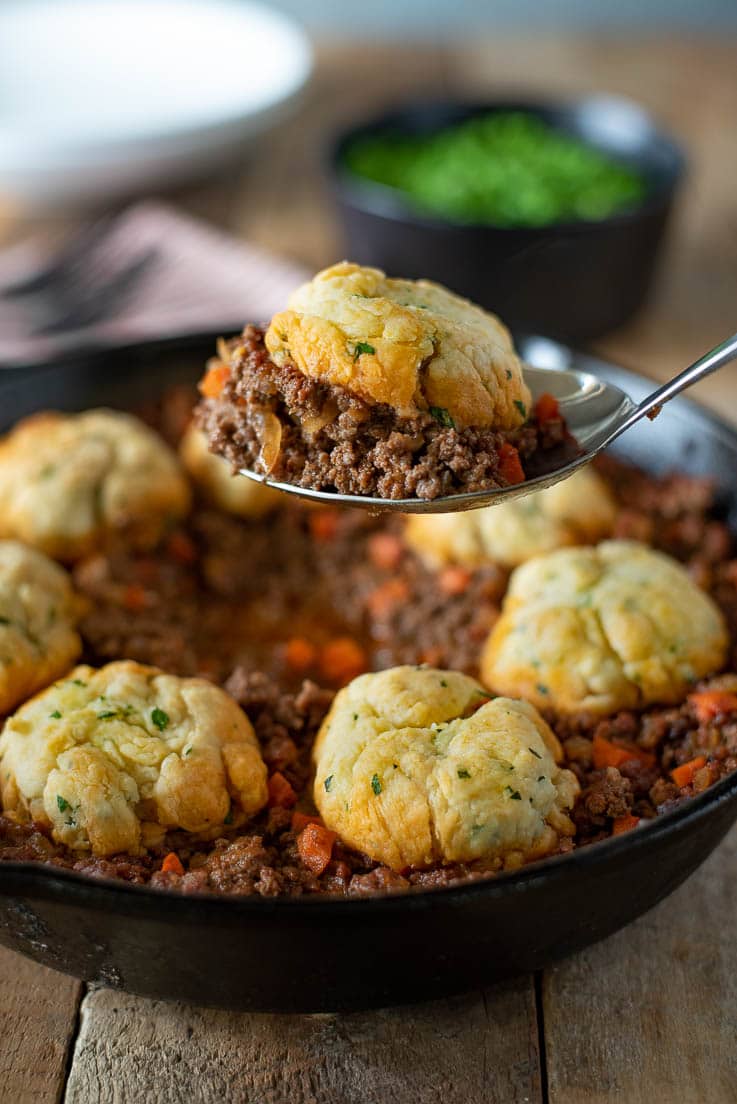
In England, a dumpling is a small ball of suet dough that has been poached in water, milk, stock, soup, or stew. Dumplings have been around for a while and started life just a mixture of flour and water.
During the Roman invasion and occupancy, somewhere around AD50, their own version of the dumpling was introduced that was made of lentils rather than flour. They didn’t catch on. As time passed, the British dumpling began to get a little more complex: milk was added along with extra ingredients and became larger and larger until it had to wrap in some cloth. It was at this point the pudding was born. The British then became famous for its puddings. The humble dumpling still remained very popular though and became quite upmarket in rich households: they were enriched with ingredients such as butter, bone marrow, and sugar. Fresh and dried fruits were also popular.
King John (1166-1216), was a massive consumer of dumplings and thought it necessary that on a Sunday every man in his court should breakfast on wine and dumplings. The king was advised by a Sir John and it was he who got King John into eating them. He was found out as a witch because he “had performed many Hellish and Diabolical Ceremonies”, including one that caused the king to think that the moon was made of green cheese. No-one seemed to blame the Magna Carta or the losing of the crown jewels on witchcraft though. His dumplings and puddings were so delicious that it was assumed that the reason for this but be that he was in league with the Devil. People soon realized it was because he put nice things in them, and forever onward, Sir John was named Sir John Pudding.
These two Johns were Dumpling Eaters according to Thomas Gordon and Henry Carey in their bizarre essay from 1726: A Learned Dissertation on Dumpling; Its Dignity, Antiquity, and Excellence With a Word upon Pudding; and Many other Useful Discoveries, of Great Benefit to the Public. Snappy title, eh? The original Dumpling Eaters, they say, were a race that split from the Romans during their British occupancy. When the Romans left, these Dumpling Eaters ‘wisely resolved never to go Home again’, because they had developed such a taste for them. They spent their time eating many dumplings and worshipping the god Bacchus. The Dumpling Eater Doctrine was still around in the early eighteenth century, where they could be found in their clubhouse where they would eat ‘not only Dumplings but Puddings; and those in no small Quantities.
Minced meat has long been used in savory dishes dating back to ancient times. Beef tartare, consisting of high-quality minced beef or finely chopped raw steak, mixed with herbs and spices, was enjoyed in Russian medieval times. Mincing beef, pork, lamb or poultry is a relatively cheap way to prepare and serve meat, making it a popular school dinner dish in the 1960s.

The Roman invasion force under Julius Caesar lands in Britain met by a horde of natives
Ground beef is sautéed with onions, carrots, red wine, Worcestershire sauce and thickened with flour.
The dumplings are made a little different as they are made in England because they are traditionally made with beef suet (beef fat) which is not available in the U.S. Vegetable shortening can be used for the dumplings or a healthier choice, refined (unflavored) coconut oil.
Flour, baking powder, salt, and parsley are mixed with beef suet, vegetable shortening, or coconut oil. Water is added until the dough forms. The dough is rolled into balls and placed on top of the beef. The entire pan is baked until the dumplings are crispy and brown.
Source